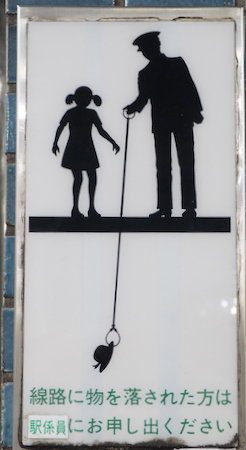
"If you drop something on the tracks, please report it
to the station staff."
|
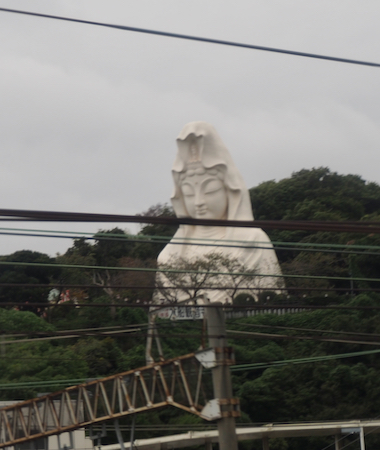
Goddess of Mercy of the White Robe at the Ofuna-Kannon Temple in Kamakura |
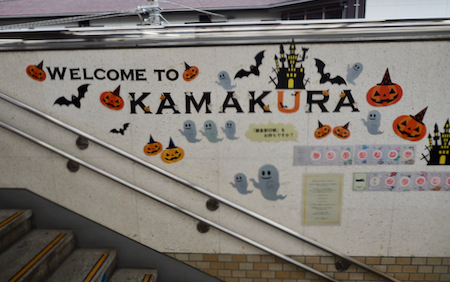
|
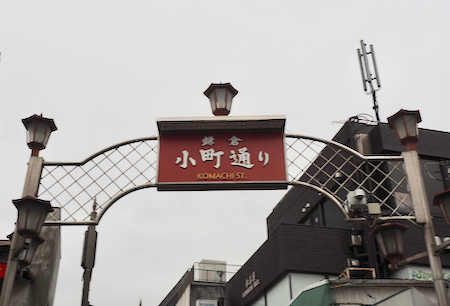
Entrance to Komachi Street
|
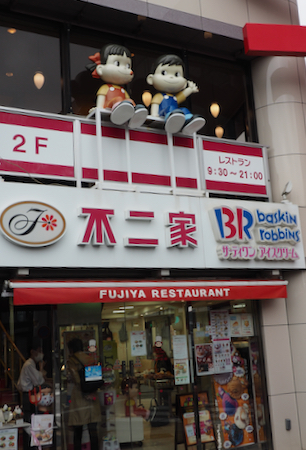
Cute sign
|
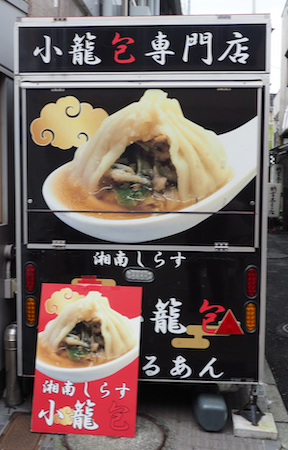
Advertising food
|
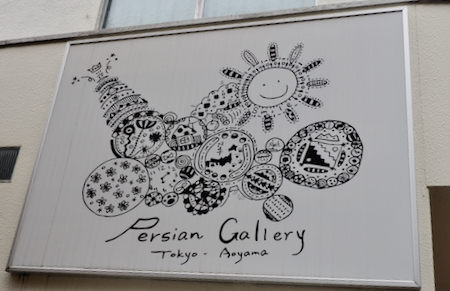
|
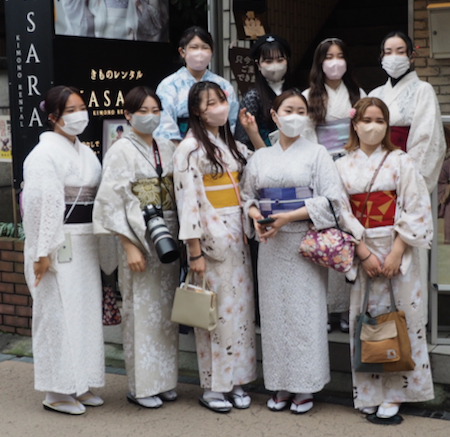
Young ladies in traditional dress
|
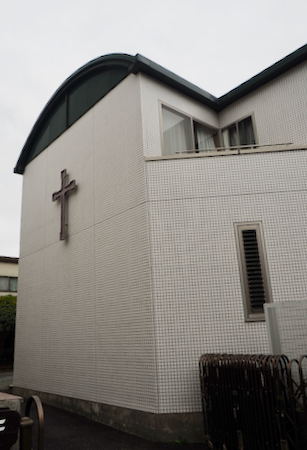
St. Michael Episcopal Church, one of a very few
Christian churches in Japan
|
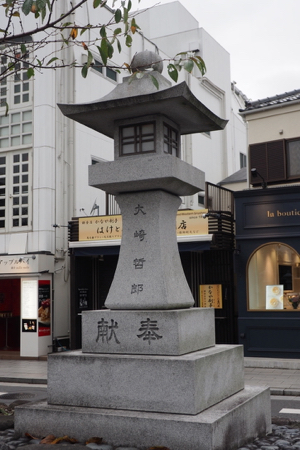
A Toro - traditional Japanese lantern - along the street |
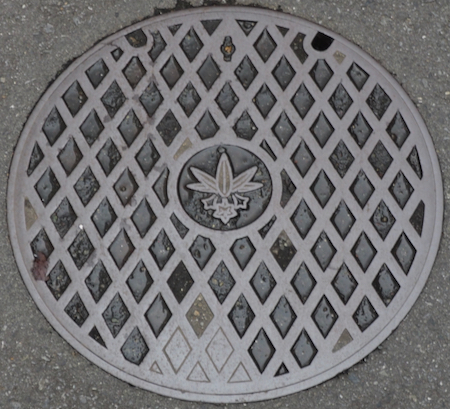
|
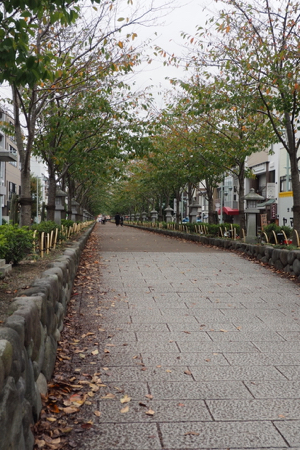
Pedestrian walkway to the Shrine
|
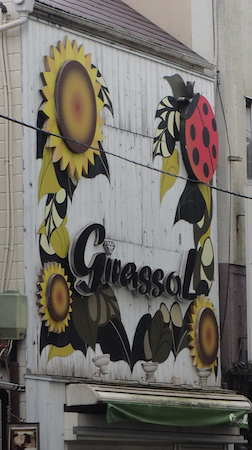
|
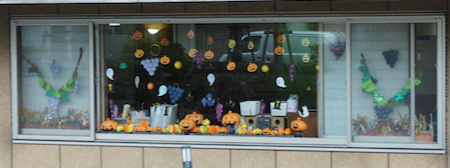
Halloween has apparently become very big in Japan |
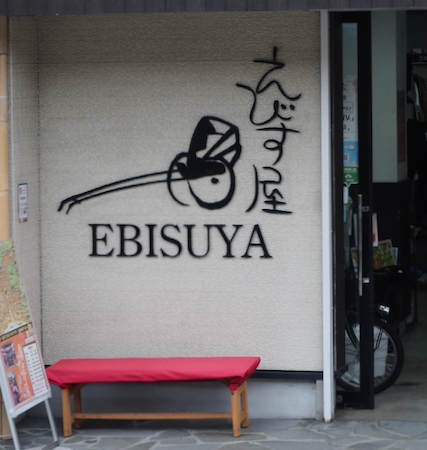
Sign for the Ebisuya Rickshaw company
|
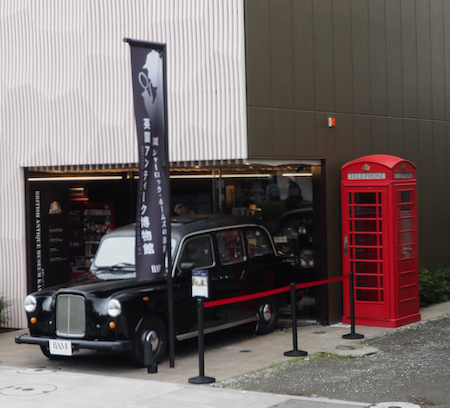
Old car and old telephone booth
|
The Tsurugaoka Hachimangu Shinto Shrine was founded in 1063 by the samurai Minamoto Yoriyoshi. We entered under a tori gate and purified ourselves at the bamboo ablution area. There are twisted ropes with white paper “lightning bolts” marking sacred areas we are not to enter.
At the main hall I stopped to honor Shintoism: bow, throw a coin to get the attention of the deity, bow twice, clap twice, pray for something, bow, and you are done. |
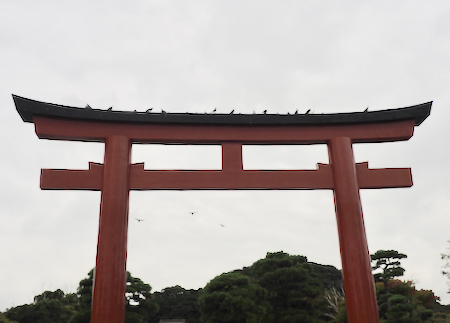
Tori gate to the Tsurugaoka Hachimangu Shinto Shrine
|
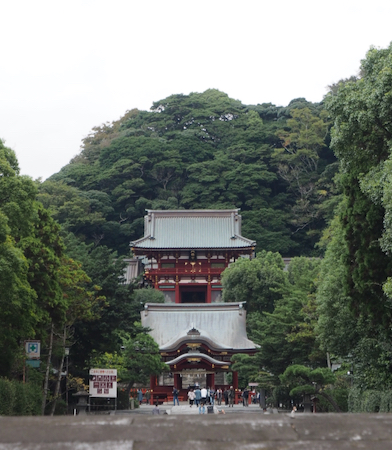
Approach to the Junior shrine (bottom) and the Senior shrine (top)
|
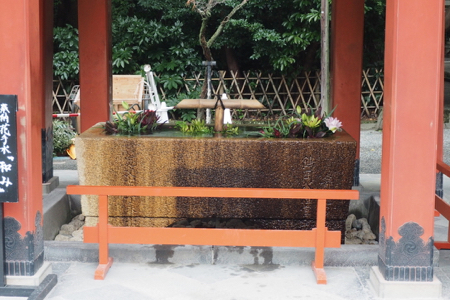
Ablution area |
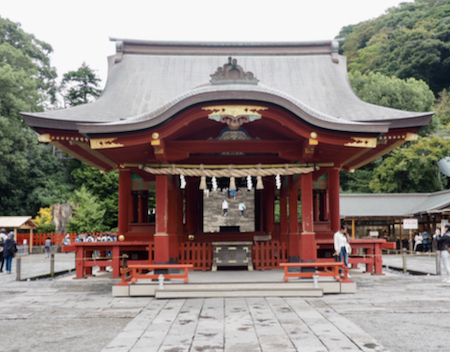
Pavilion called the Maiden |
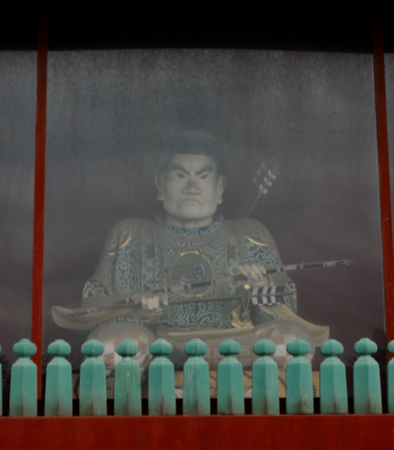
A giant Nio or wooden warden found at the sides of the entrance to the temple
|
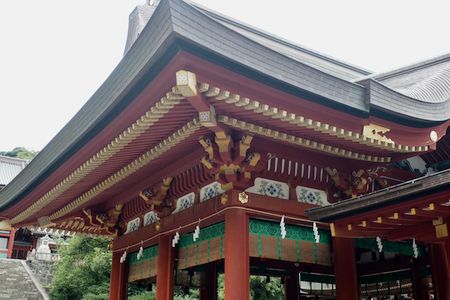
Architectural details
|
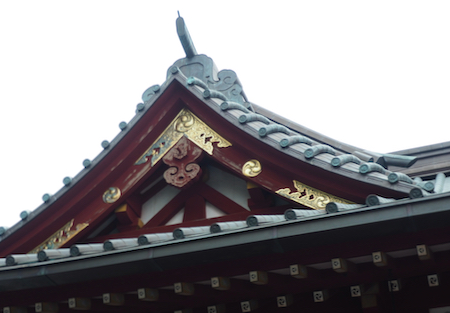
Architectural details
|
There are wooden votive prayers hanging on trellises. At this shrine they are in the shape of ginkgo tree leaves. Someone buys a blank, writes a wish, signs it, and hangs it on the trellis until a Shinto priest collects them all and burns them to send the wishes up to the deity. Shinto has no “god.” The deities are all things in nature.
They also sell fortune telling papers. If the fortune is positive, you keep it. If it is bad, you tie the paper to a rack and leave it.
|
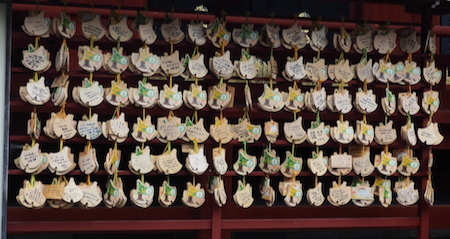
Votive prayers
|
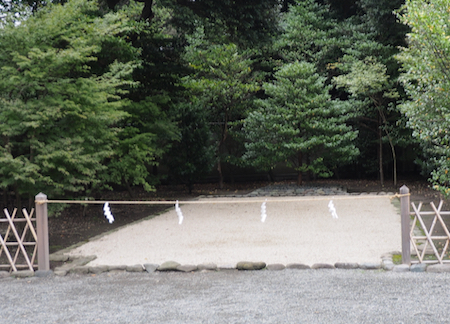
Area where someone could park their car to have it blessed
to prevent accidents. |
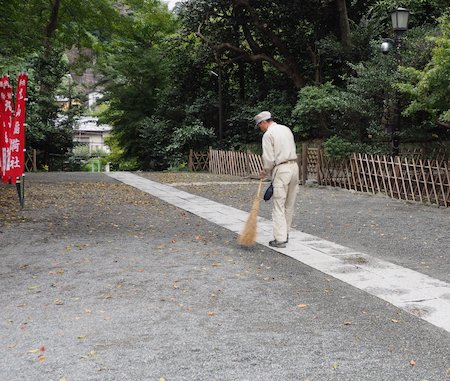
Maintenance
|
We walked to a small fox shrine, or inari. Instead of just thanking the fox for a good harvest, business people now pray or thank the fox deity for a successful business venture. Some of the foxes have red bibs on them. This is a borrowed Buddhist tradition of prayers for children who have died.
The hanging, white, paper objects found in many places at a Shinto Shrine are called Shide - or lightning wands. They are used to demarcate boundaries and in a variety of purification ceremonies.
|
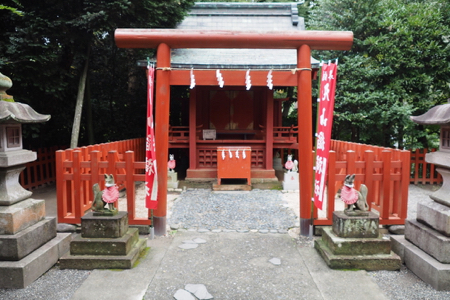
Fox shrine
|
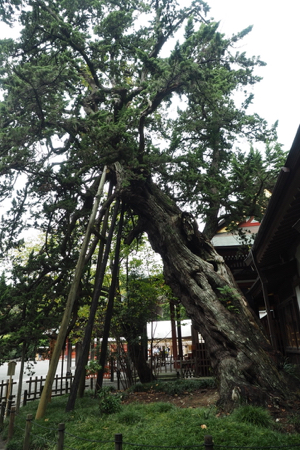
Propping up an old tree
|
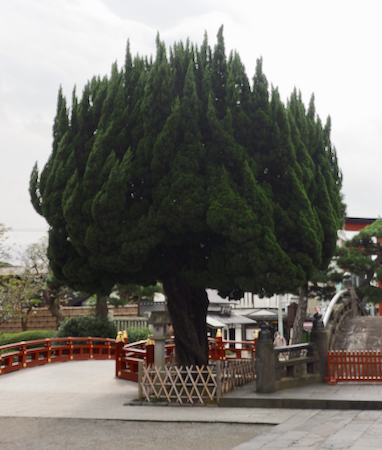
|
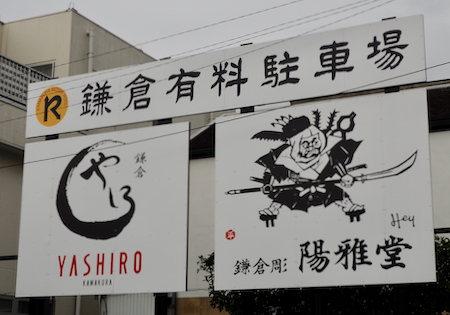
Top banner says "Parking Lot" |
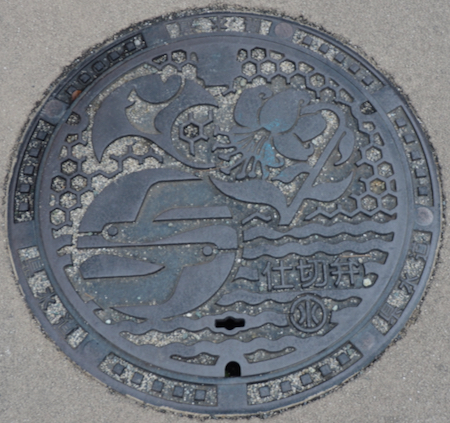
|
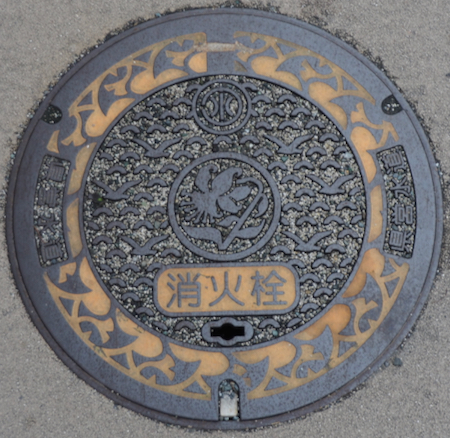
Another fire hydrant
|
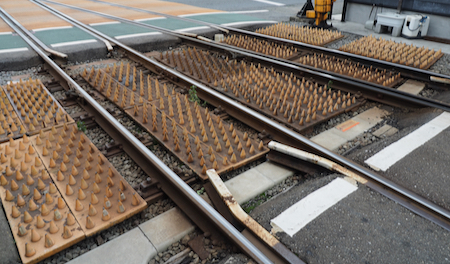
Interesting way to discourage cars from driving onto the tracks |
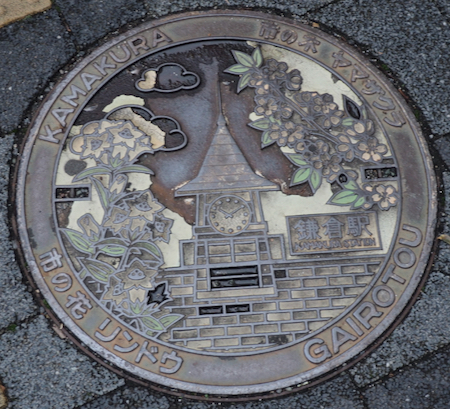
Bottom left says "City flower Gentian" and the top right says
"City tree Yamazakura"
|
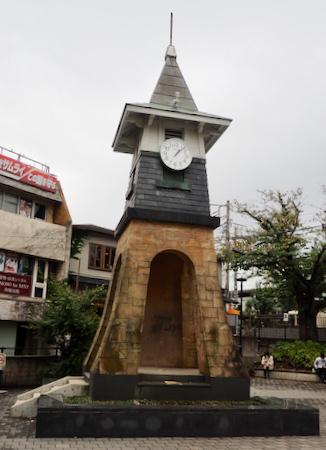
Old Station Clock Tower
|
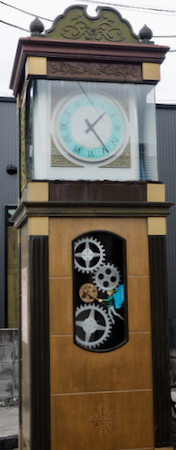
Clock with Peter Pan amongst the gears
|
After a very good lunch of tempura, we rode a trolley and walked to the Hasedera Buddhist Temple.
The main temple, Kamakura Hasedera Temple, has a 30 foot high standing Gold Kannon Bodhisattva. It is a future Buddha, destined for enlightenment, who has vowed to save all sentient beings and represents compassion, mercy, and love. Next to Kannon is Amida, a seated Buddha that is nine feet tall. It is believed that this one will expel evil spirits and protect against misfortune.
|
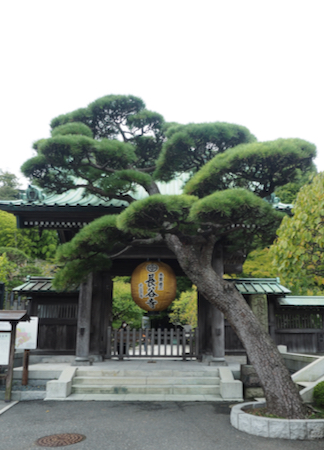
Entrance to Hasedera Buddhist Temple
|
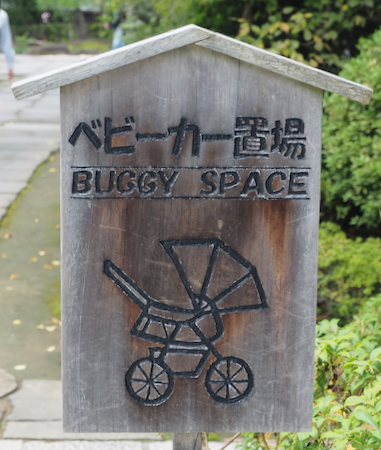
|
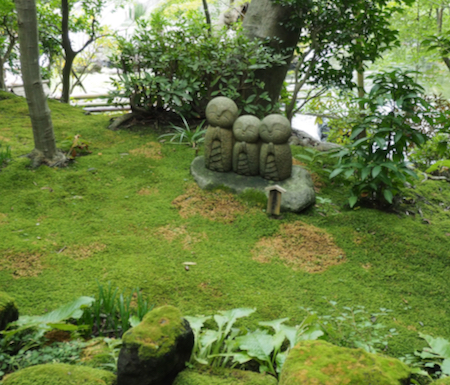
|
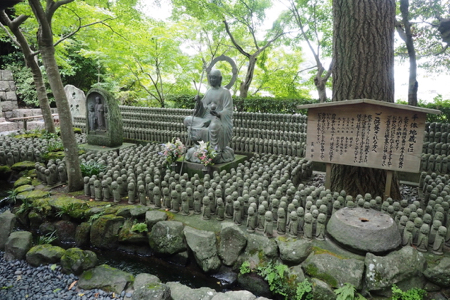
Jizo statues - placed by parents mourning offspring lost to miscarriage, stillbirth, or abortion
|
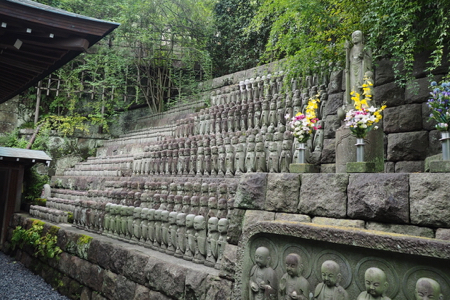
Jizo statues - These statues remain in place for about a year, before being removed to make way for more statues; it is estimated that some 50,000 Jizo statues have been placed at Hasedera since World War II. |
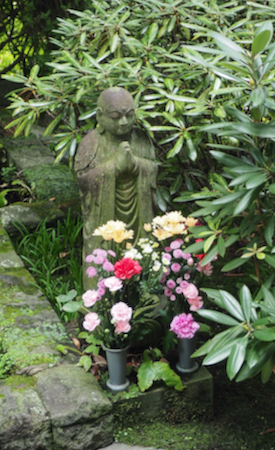
|
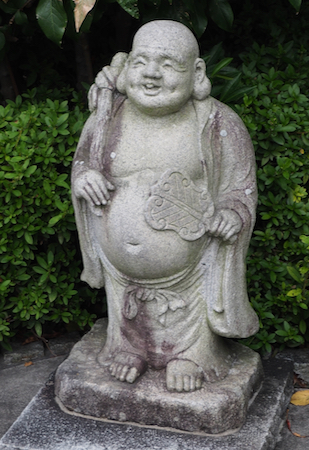
Jolly fellow
|
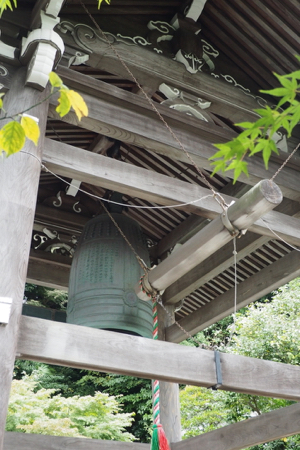
Temple bell
|
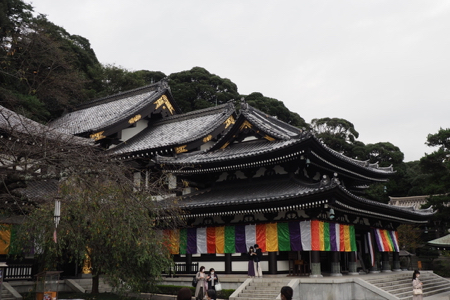
Kannon-do Hall
|
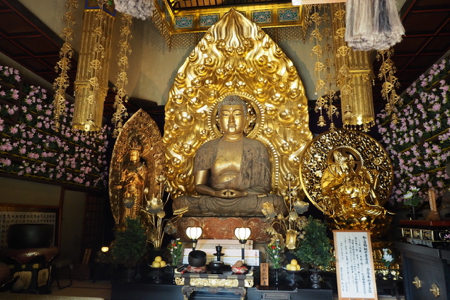
Amida Nyorai, a seated Buddha that is nine feet tall. It is believed that this one will expel evil spirits and protect against misfortune.
|
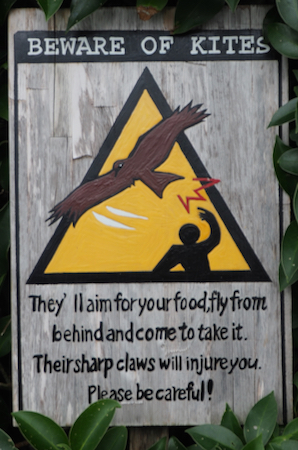
|
Next we walked to see the Great Buddha - Kamakura Daibutsu. It was built around 1252. It is 3.4 meters (43.8 ft.) high, sits on a raised base, is hollow, and was once covered in gold leaf. There is still a smudge of gold on its right cheek.
|
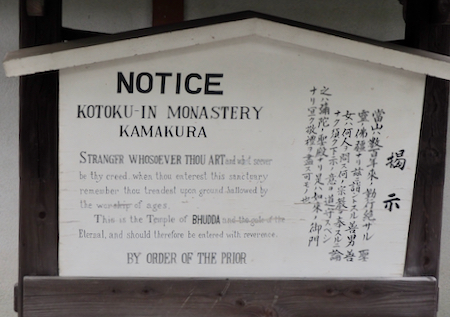
The sign says: "Stranger, whosoever thou art and whatsoever be thy creed, when thou enterest this sanctuary remember thou treadest upon ground hallowed by the worship of ages. This is the Temple of Buddha and the gate of the eternal, and should therefore be entered with reverence."
|
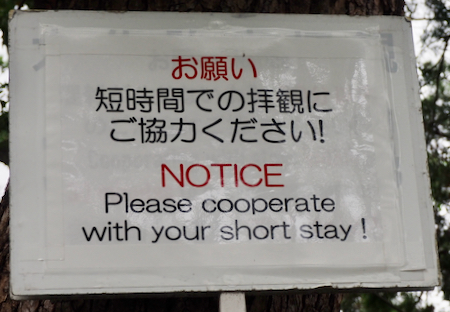
Not sure what this is supposed to mean
|
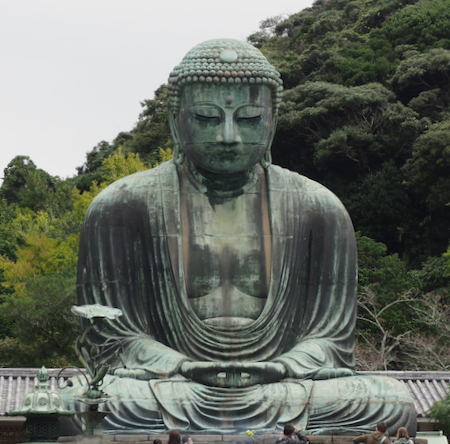
Great Buddha of Kamakura - the Kamakura Daibutsu is a large bronze statue of Amitabha, the primary buddha of Pure Land Buddhism
|
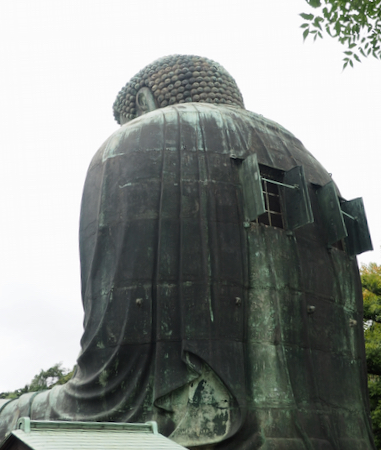
From the rear
|
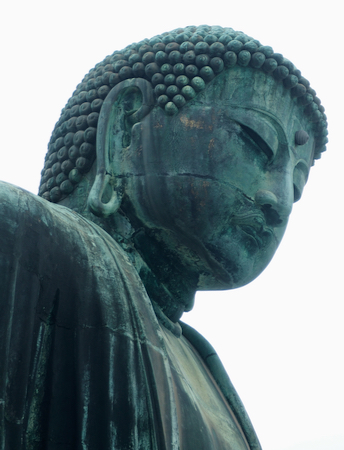
Traces of gold leaf on the statue's temple
|
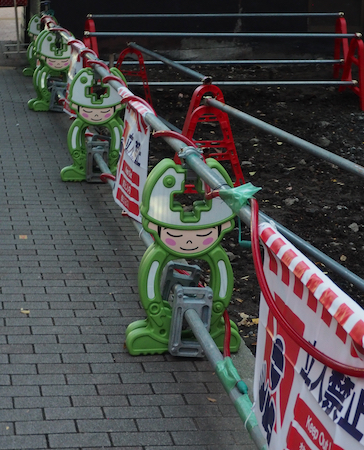
On the way back to town, I finally got a photo of these adorable supports used to keep people away from construction sites - much nicer than orange cones.
|




















































